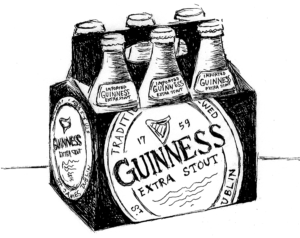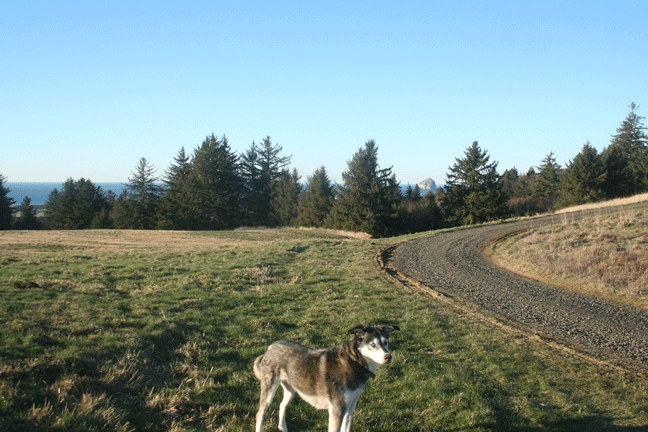Remembrances of Father Andy Duffner and a Certain Gravel Road
I’ve met one person who attained my conception of nirvana in his lifetime and his name was Father Andy Duffner. I’ve been thinking about him a lot in recent months, as my mind returns to a time when I was better connected to the land and beginning to find my way as a writer.
When I say he attained nirvana, or awakening, I mean that Father Andy was fully present at all times, had let go of all ego, material possessions, or professional aspirations. He had obliterated all desire. He understood with perfect clarity his role in the watershed—ecological and spiritual. He expected nothing. He served others and nature without any expectation of reward. He was calm every moment I was with him, and that included many contentious public conservation meetings where many people lost themselves in bitterness. He modeled the fading American art of composure. Animals and wildlife responded to him with incredible serenity. My three big dogs adored him and Sonny the husky particularly so. His precise daily practice in life was his meditation and I saw him practicing it all the time. I used to watch him repair a certain gravel road and that’s when I always intuited he had gone beyond us, and attained nirvana. More on the gravel road later.
I further make my case for his attainment because of that beatific look on his bearded face and the deliberate way he smoked a pipe.
We first met in 1998 when I became caretaker of the Nestucca Bay National Wildlife Refuge. Father Andy was a Jesuit priest from the Jesuits Oregon Province who administered the Nestucca Sanctuary, a lay and clerical retreat center that abutted the refuge. We were neighbors and became friends. He also became a teacher to me although I didn’t really recognize it at the time.
Father Andy passed away from pancreatic cancer in 2005, three years before I left the refuge, and it was a devastating loss to me, his Oregon Coast ecological community, and foremost, the Nestucca Sanctuary. He’s buried in a Jesuit graveyard in Spokane and that has always struck me as the wrong place for his final remains. They should have been interred or spread to the winds at the place he loved and cared for, but that is not the official Catholic way.
Nestucca Sanctuary was founded in the late 1930s. From what little I learned about Father Andy’s personal history, (and some of the following could be wrong) he arrived there in the early 80s after leaving a career as a professor of physics at Gonzaga. The Sanctuary was in pretty bad shape when he assumed leadership, and over the course of the next 25 years or so, he whipped it into shape, into one of the magical secret healing spots on the Oregon Coast. The complex consisted of a hard-wood-floored yurt, office, chapel, main lodge (with an incredible library packed with arcane books), dining hall, cabins, bunkhouse, and various other structures. Deer, hummingbirds and chickens roamed around the complex. Whenever I visited the Sanctuary, I often felt I was entering another world, a better one, and certainly one that had absolutely nothing to do with organized religion.
There was no telephone. In the event that someone from the Sanctuary had to use a phone, they had to visit my house on the refuge, two miles away, and knock on the door.
Father Andy used the telephone once, in 1998, after a huge storm knocked out power and dropped a dozen trees across the gravel road that led from Highway 101, past my house, wound around Cannery Hill, and ended at the Sanctuary. He called the local PUD and they sent a crack crew to cut us all out. Later, Andy thanked me for the use of the phone by buying me a six pack of Guinness beer and leaving it in my garage. There was no note.
Nothing is left of the Sanctuary today. It was purchased by USFWS a few years ago and they razed all the structures to the ground, or so I was told. The Jesuit land is now part of the wildlife refuge and that’s a great thing, because it was almost developed into a commercial retreat.
As I mentioned earlier, a gravel road, Christensen Road to be exact, played a significant role in constructing my belief about Father Andy’s attainment of nirvana. The Sanctuary was obligated to maintain the road due to an easement agreement with a dairy farmer who sold the land to the Jesuits many, many years ago.
For the uninitiated, maintaining a three-mile gravel road on the Oregon Coast where it rains 70 inches a year is a formidable task. It involves constant maintenance that includes scraping out potholes and replenishing of gravel. Father Andy had a little orange Kubota tractor to assist him and it was in immaculate condition. He would drive up and down the road, grading shoulders, repairing potholes, spreading gravel. He smoked a pipe while he worked. He wore ear protection. He was out there for hours and hours. He always waved to me and the dogs as he passed us on our two or three daily walks up the road to the top of Cannery Hill, where the best moments of my entire life occurred and I have never written about and probably never will.
Christensen Road was easily the best maintained gravel road on the Oregon Coast. It was no miracle that a pothole never lasted more than a single day. Father Andy met the obligation of the easement with a methodical and expert practice that he clearly took great joy in doing.
We never once talked about the road. There was nothing to say because it existed in perfection without a shred of pride attached to it.
 A few days after Father Andy’s death, I drank a six-pack of Guinness on Cannery Hill, where I sometimes watched him jog. The dogs were with me. We sat down in the grass and watched the ocean—and the road. I went there not to grieve, but to celebrate his extraordinary, sublime life, his attainment. The sun was setting and I wrote this haiku for him:
A few days after Father Andy’s death, I drank a six-pack of Guinness on Cannery Hill, where I sometimes watched him jog. The dogs were with me. We sat down in the grass and watched the ocean—and the road. I went there not to grieve, but to celebrate his extraordinary, sublime life, his attainment. The sun was setting and I wrote this haiku for him:
His orange tractor
Smooths away our road’s potholes
Pipe smoke fills the air
In my all my times together with Andy, a few dinners, many conservation meetings, chance encounters on the road and Cannery Hill, I think we might have said a thousand words—total—between us. Where we lived, we didn’t need to say much more.
I sure would love to talk to him now. He’d help me find a new path and help me to let go.

